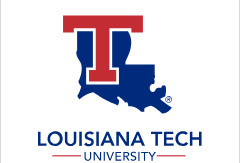Date of Award
Fall 11-16-2024
Document Type
Thesis
Degree Name
Master of Science (MS)
Department
Mechanical Engineering
First Advisor
Shafiqur Rahman
Abstract
In the modern era of advanced manufacturing, optimizing process parameters is pivotal in ensuring the quality and reliability of sophisticated component fabrication. This study presents a novel, data-driven approach to parameter optimization in two cutting-edge manufacturing techniques: Friction Stir Welding (FSW) and Laser Powder Bed Fusion (LPBF). By leveraging machine learning methodologies, this research addresses the critical challenge of efficiently determining optimal process parameters, a task traditionally relying on time-consuming and resource-intensive trial-and-error methods. This study will lead to a robust data-driven framework for process analysis of more advanced manufacturing techniques like the Additive Friction Stir Deposition (AFSD) process. Friction Stir Welding (FSW) is renowned for its solid-state deformation mechanism and high joining strength. The process is controlled by adjusting the process parameters, including rotational speed, translational speed, and axial force. However, the lack of proper settings and optimization of these parameters can result in a defective weld joint and unexpected failure. The traditional trial-and-error-based experimental and computational approaches for finding the optimal combination of parameters are expensive, timeconsuming, and intricate. Machine Learning (ML), a data analysis technique, can be a useful alternative to optimize the process parameters in the FSW process. The tool rotational speed, translational speed, and axial force in FSW can be categorized as the input parameters or feature variables in the ML dataset. On the other hand, a performance parameter, such as the ultimate tensile strength of the welded joint, can be set as the output parameter or the target variable in the dataset. This study presents an ML modeling technique to predict the ultimate tensile strength for an FSW welded joint. A dataset is developed by collecting data for the three features and a target variable from experimental procedures. The skill of the trained ML model is estimated using the k-fold cross-validation procedure. The ML modeling findings for several supervised algorithms are evaluated based on the mean absolute error, root means squared error, relative absolute error, and root relative squared error. The sensitivity analysis is conducted by finding the global correlation coefficient. The ML model is validated by comparing its results with the experimental data and showing a good agreement between the ML model prediction and experimental results. Laser Powder Bed Fusion is an additive manufacturing process that uses a highpower laser to selectively melt and fuse metal powder particles, creating complex threedimensional objects layer by layer. The ML framework developed for the FSW process is further enhanced and applied to the LPBF process. This study presents a cost-effective and high-precision Machine Learning (ML) method for predicting the melt-pool geometry and optimizing the process parameters in the laser powder-bed fusion (LPBF) process with Ti- 6Al-4V alloy. Unlike many ML models, the presented method incorporates five key features, including three process parameters (laser power, scanning speed, and spot size) and two material parameters (layer thickness and powder porosity). The target variables are the melt-pool width and depth, which collectively define the melt-pool geometry and give insight into the melt-pool dynamics in LPBF. The dataset integrates information from an extensive literature survey, computational fluid dynamics (CFD) modeling, and laser melting experiments. Multiple ML regression methods are assessed to determine the best model to predict the melt-pool geometry. Ten-fold cross-validation is applied to evaluate the model performance using five evaluation metrics. Several data preprocessing, augmentation, and feature engineering techniques are performed to improve the accuracy of the models. Results show that the “Extra Trees Regression” and “Gaussian Process Regression” models yield the least errors for predicting melt-pool width and depth, respectively. The ML modeling results are compared with the experimental and CFD modeling results to validate the proposed ML models. The Sensitivity analysis also determines the most influential parameter affecting the melt-pool geometry. The processing parameters are optimized using an iterative grid search method employing the trained ML models. The presented ML framework offers computational speed and simplicity, which can be implemented in other additive manufacturing techniques to comprehend the critical traits. This comprehensive study demonstrates the efficacy of ML techniques in optimizing process parameters for both FSW and LPBF, offering computational speed and simplicity. The presented ML framework has the potential for broader implementation across various additive manufacturing techniques, including additive friction-stir deposition, elucidating critical traits in the process, and enabling process parameter optimization.
Recommended Citation
Ahmed, Radif Uddin, "" (2024). Thesis. 141.
https://digitalcommons.latech.edu/theses/141
Included in
Artificial Intelligence and Robotics Commons, Materials Science and Engineering Commons, Mechanical Engineering Commons

